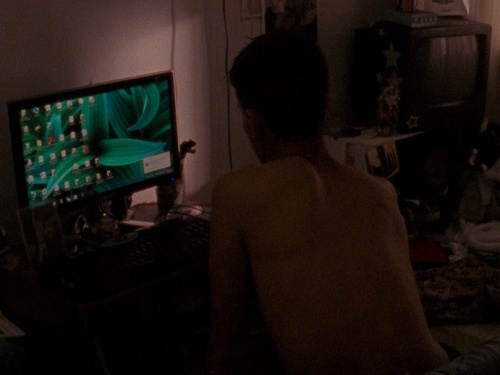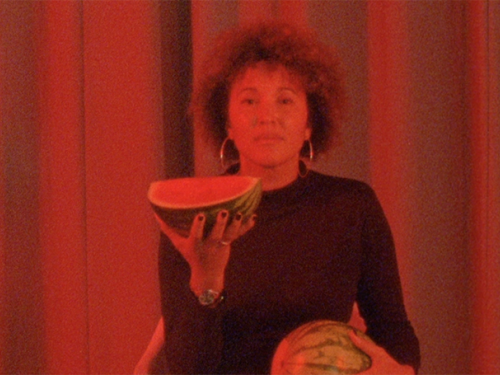Consider the Fugue: The Wizard of Oz
With ICA Cinematheque season Consider the Fugue drawing to a close on Tuesday 27 August with Jacob's Ladder (1990), Film & Cinema Co-ordinator James King considers how this week's screening, The Wizard of Oz, can be seen as a key prototype of the fugue-narrative in cinema.When looking at the dirt-brown sepia tones of the Kansas-set scenes in The Wizard of Oz (Victor Fleming, 1939), it is hard not to draw comparisons with the early photographs of Walker Evans, his monochrome portraits of impoverished Southern farm workers taken whilst documenting the effects of the Great Depression for the US Department of Agriculture in the mid-1930s, images that would be later collated in his landmark collaboration with writer James Agee Let Us Now Praise Famous Men (1941).
This similarity would not have been lost on audiences in 1939, images of poverty and hardship fresh in everyone’s minds, the Depression being a national trauma the public were still very much keen to escape. The Wizard of Oz, with its stark visual contrasting of the fantasy and reality sequences and its use of casting the same actors in multiple roles – a technique emulated sixty years later by David Lynch in Mulholland Dr. (2001) – reveals itself to be a key prototype of the fugue-narrative and highlights how fantasy construction is inextricably linked to the escapist-origins of Hollywood cinema.
Hollywood studio Metro-Goldwyn-Mayer bought the rights to L. Frank Baum’s popular children’s fantasy novel in 1938, whilst America was still in a state of national recovery. During the economic crisis cinema attendances had reached an all-time high, ironically ushering in the ‘Golden Age’ of Hollywood – a night in a crowded movie theatre was deemed a cheap form of escapism where audiences could, for a few hours at least, leave their financial woes behind and immerse themselves in the glamorous musicals, romances and screwball comedies that were the staple of Hollywood’s output during the period. The arrival of Technicolor had further increased the scope and appeal of cinema as an escapist art form, literally adding new tones to the medium’s palette, and in Baum’s brightly-coloured fantasy world of Oz, with its emerald cities and yellow brick roads, producer Mervyn LeRoy saw the opportunity to showcase this new technology to spectacular effect.
To maximize the visual impact of the multi-coloured Oz sequences, the decision was made to shoot the Kansas sections of the film on black & white stock and then process them with a sepia tone. The effect is surprisingly haunting: Kansas is depicted as a grim, barren wasteland - gnarled, leafless trees and spindly electricity pylons are all that adorn the flat rural landscape. This is a place populated by sadistic landowners, ravaged by tornadoes, with the threat of unemployment hanging over everything – a tinted simulacrum of Depression-era America. Thus it is perfectly understandable that our protagonist, the 16-year-old orphaned farm girl Dorothy (Judy Garland), pines to escape this bleak world for “someplace where there isn’t any trouble”, crooning the now infamous ballad ‘Somewhere Over the Rainbow’.
Fifteen minutes into the film, a tornado hits Kansas. Whilst the farmhands and the rest of her family manage to escape to the storm cellar, Dorothy finds herself trapped in the farmhouse, exposed to the raging elements. A window pane is blown right out of the wall and strikes Dorothy on the back of the head; she collapses onto a bed, knocked unconscious. When she comes to, Dorothy discovers that the farmhouse has been ripped off its foundations and is swirling up in the air, caught in the middle of the cyclone.
Dorothy awakens to see the empty windowpane, framed uncannily like a cinema screen, the backdrop a wall of swirling tornado dust. Then, with a ghostly super-imposition effect, a series of semi-transparent spectres are presented in the window: flying trees, electricity pylons and chicken coops. Dorothy looks through the window and sees her Aunt Em sail by, knitting away in her rocking chair. Then two of the farmhands appear in the frame, rowing through the air in a small boat, they wave at the confused girl. Finally, Dorothy’s nemesis, the cruel Miss Almira Gulch, appears on a bicycle, peddling frantically. The image of Miss Gulch dissolves into that of a witch, riding a broomstick, cape billowing in the wind – the witch cackles maniacally and flies away. In the next moment the building crashes to the ground, Dorothy opens the front door, steps out of the sepia farmhouse and into the fantastical Technicolor land of Oz.
Whereas in Mulholland Dr. the strange underground theatre ‘Club Silencio’ served to expose to the audience the illusion of the fugue-fantasy, to depict its dissolution, here the spinning farmhouse is a space in which the audience is presented with the imaginative formulation of the fugue fantasy-world. The familiar scenery of home is stripped away and figures from reality metamorphosise into fictional characters. All the principle players in Dorothy’s Oz fantasy narrative are played by actors that have previously appeared in some guise in the Kansas section of the film; Miss Gulch is the Wicked Witch of the West; the farmhands become Dorothy’s three travelling companions: the Scarecrow, Tin Man and the Lion; even the Wizard of Oz has been previously encountered as the travelling con-artist Professor Marvel. Like many acts of creation, the fugue-fantasy draws pieces of its inspiration from reality.
Oz is the colourful antithesis of Kansas: it is exciting, dynamic, full of magical characters and unbelievable scenery. Yet Dorothy is acutely aware that she must go home, and her desire to return to Kansas is the driving force throughout the narrative. The film is daring in its explicit acknowledgement of the temporary nature of the cinematic fantasy – eventually the film will run out, eventually the show must end, eventually everyone must go home. The message was bittersweet for audiences at the time, whose real challenge was not defeating witches and flying monkeys, but in finding hope and satisfaction from their often less-than-glamorous home lives. Thus Dorothy’s final stoic litany: “There’s no place like home. There’s no place like home".
The final film in the Consider the Fugue season is Jacob’s Ladder (1990), on Tuesday 27 August, 7pm.
This article is posted in: Articles, Blog, Film
Tagged with: David Lynch, Film, Walker Evans, Wizard of Oz





